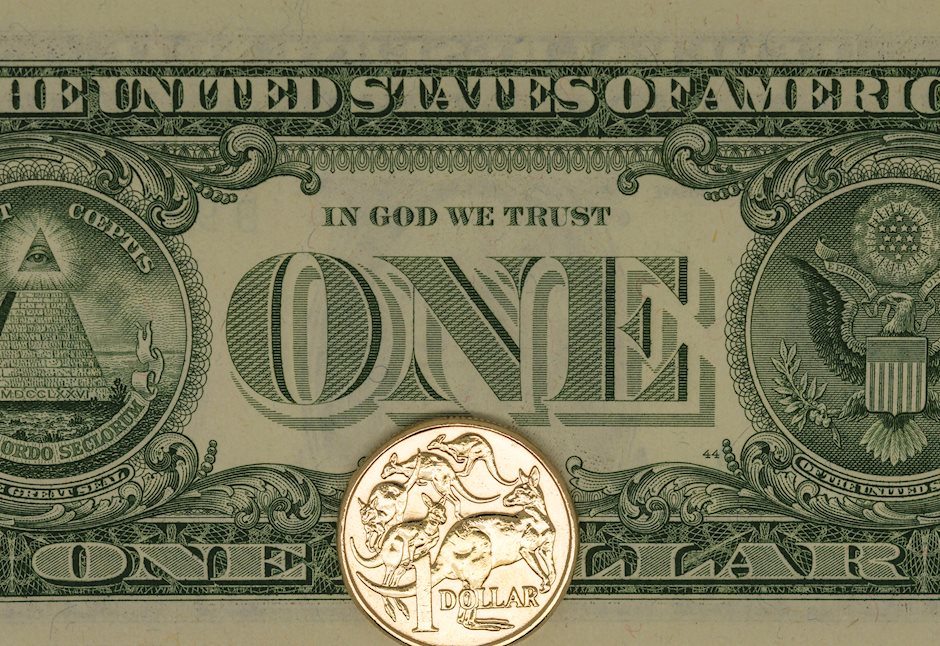Australian Dollar appreciates as Judo Bank Composite PMI revises upward in December
- The Australian Dollar holds gains following the PMI data release on Monday.
- The Caixin China Services PMI increased to 52.2 in December 2024, up from the previous reading of 51.5.
- The US Dollar Index hovers near 109.00, close to recent highs.

The Australian Dollar (AUD) extends its gains for the third successive session against the US Dollar (USD) on Monday. The AUD/USD appreciates as the AUD gains support following the release of the Judo Bank Australia Purchasing Managers' Index (PMI) and the Caixin Services PMI for China, its key trading partner.
The Judo Bank Australia Composite PMI for December 2024 was revised upward to 50.2 from the previous reading of 49.9, indicating a third consecutive month of marginal growth in private sector output. This expansion was driven by the services sector, as manufacturing output continued to contract. Meanwhile, the Services PMI was revised higher to 50.8, up from 50.5 in November, marking the eleventh consecutive month of growth in the services sector.
The Caixin China Services Purchasing Managers’ Index (PMI) rose to 52.2 in December 2024, up from 51.5 in November, exceeding market expectations of 51.7. This marks the fastest growth in the services sector since May. Meanwhile, the Caixin Manufacturing PMI, released on Thursday, unexpectedly fell to 50.5 in December, down from 51.5 in November, missing market forecasts of 51.7.
According to Reuters, the Shanghai Stock Exchange has committed to deepen capital markets opening during a meeting with foreign institutions. China’s economy is underpinned by solid fundamentals and demonstrates resilience amid a complex global environment. The Financial Times reported on Friday that the People's Bank of China (PBoC) anticipates an interest rate cut at an appropriate time this year. Given their close trade relationship, fluctuations in China’s economy often have a notable impact on Australian markets.
Australian Dollar advances despite a stronger US Dollar amid Fed's hawkish policy shift
- The US Dollar Index (DXY), which measures the US Dollar’s (USD) performance against six major currencies, holds its position near 109.00.
- The US ISM Manufacturing PMI improved to 49.3 in December, from 48.4 in November. This reading came in better than the market expectation of 48.4.
- Richmond Fed President Thomas Barkin highlighted on Friday that the benchmark policy rate should remain restrictive until there is greater confidence that inflation is on track to return to the 2% target.
- Fed Governor Adriana Kugler and San Francisco Fed President Mary Daly underscored the challenging balancing act facing US central bankers as they aim to slow the pace of monetary easing this year.
- The US Initial Jobless Claims for the week ending December 27 have come in lower than expected. Individuals claiming jobless benefits for the first time were 211K, lower than estimates of 222K and the former release of 220K.
- Traders are cautious regarding President-elect Trump’s economic policies, fearing that tariffs could increase the cost of living. These concerns were compounded by the Federal Open Market Committee’s (FOMC) recent projections, which indicated fewer rate cuts in 2025, reflecting caution amid persistent inflationary pressures.
- Escalating geopolitical tensions in the Middle East and the ongoing Russia-Ukraine war are likely to support the USD, a traditional safe-haven currency, in the near term. Analysts at Action Economics observed, “The greenback has been boosted by rising growth concerns elsewhere against the backdrop of geopolitical risk.”
- The National Development and Reform Commission (NDRC), China's state planner, expressed confidence in achieving continued economic recovery in 2025. In a statement on Friday, it highlighted plans to significantly increase funding from ultra-long treasury bonds to support "two new" programs, with expectations for steady consumption growth throughout the year.
Technical Analysis: Australian Dollar tests 14-day EMA ahead of 0.6250
The AUD/USD pair trades near 0.6230 on Monday, maintaining a bearish outlook as it continues to move within a descending channel on the daily chart. However, the 14-day Relative Strength Index (RSI) climbs above the 30 level, indicating a potential weakening of bearish momentum, despite the ongoing downtrend.
On the upside, the AUD/USD tests immediate resistance at the 14-day Exponential Moving Average (EMA) at 0.6243, followed by the descending channel’s upper boundary, around the psychological mark of 0.6300.
Regarding its support, the AUD/USD pair could navigate the region around the lower boundary of the descending channel, around 0.6020.
AUD/USD: Daily Chart
Australian Dollar PRICE Today
The table below shows the percentage change of Australian Dollar (AUD) against listed major currencies today. Australian Dollar was the strongest against the Japanese Yen.
| USD | EUR | GBP | JPY | CAD | AUD | NZD | CHF | |
|---|---|---|---|---|---|---|---|---|
| USD | -0.02% | -0.13% | 0.35% | -0.36% | -0.15% | -0.12% | 0.02% | |
| EUR | 0.02% | -0.12% | 0.34% | -0.28% | -0.09% | -0.06% | 0.08% | |
| GBP | 0.13% | 0.12% | 0.45% | -0.16% | 0.03% | 0.06% | 0.20% | |
| JPY | -0.35% | -0.34% | -0.45% | -0.70% | -0.48% | -0.44% | -0.09% | |
| CAD | 0.36% | 0.28% | 0.16% | 0.70% | 0.13% | 0.19% | 0.36% | |
| AUD | 0.15% | 0.09% | -0.03% | 0.48% | -0.13% | 0.03% | 0.17% | |
| NZD | 0.12% | 0.06% | -0.06% | 0.44% | -0.19% | -0.03% | 0.14% | |
| CHF | -0.02% | -0.08% | -0.20% | 0.09% | -0.36% | -0.17% | -0.14% |
The heat map shows percentage changes of major currencies against each other. The base currency is picked from the left column, while the quote currency is picked from the top row. For example, if you pick the Australian Dollar from the left column and move along the horizontal line to the US Dollar, the percentage change displayed in the box will represent AUD (base)/USD (quote).
Australian Dollar FAQs
One of the most significant factors for the Australian Dollar (AUD) is the level of interest rates set by the Reserve Bank of Australia (RBA). Because Australia is a resource-rich country another key driver is the price of its biggest export, Iron Ore. The health of the Chinese economy, its largest trading partner, is a factor, as well as inflation in Australia, its growth rate and Trade Balance. Market sentiment – whether investors are taking on more risky assets (risk-on) or seeking safe-havens (risk-off) – is also a factor, with risk-on positive for AUD.
The Reserve Bank of Australia (RBA) influences the Australian Dollar (AUD) by setting the level of interest rates that Australian banks can lend to each other. This influences the level of interest rates in the economy as a whole. The main goal of the RBA is to maintain a stable inflation rate of 2-3% by adjusting interest rates up or down. Relatively high interest rates compared to other major central banks support the AUD, and the opposite for relatively low. The RBA can also use quantitative easing and tightening to influence credit conditions, with the former AUD-negative and the latter AUD-positive.
China is Australia’s largest trading partner so the health of the Chinese economy is a major influence on the value of the Australian Dollar (AUD). When the Chinese economy is doing well it purchases more raw materials, goods and services from Australia, lifting demand for the AUD, and pushing up its value. The opposite is the case when the Chinese economy is not growing as fast as expected. Positive or negative surprises in Chinese growth data, therefore, often have a direct impact on the Australian Dollar and its pairs.
Iron Ore is Australia’s largest export, accounting for $118 billion a year according to data from 2021, with China as its primary destination. The price of Iron Ore, therefore, can be a driver of the Australian Dollar. Generally, if the price of Iron Ore rises, AUD also goes up, as aggregate demand for the currency increases. The opposite is the case if the price of Iron Ore falls. Higher Iron Ore prices also tend to result in a greater likelihood of a positive Trade Balance for Australia, which is also positive of the AUD.
The Trade Balance, which is the difference between what a country earns from its exports versus what it pays for its imports, is another factor that can influence the value of the Australian Dollar. If Australia produces highly sought after exports, then its currency will gain in value purely from the surplus demand created from foreign buyers seeking to purchase its exports versus what it spends to purchase imports. Therefore, a positive net Trade Balance strengthens the AUD, with the opposite effect if the Trade Balance is negative.
Author

Akhtar Faruqui
FXStreet
Akhtar Faruqui is a Forex Analyst based in New Delhi, India. With a keen eye for market trends and a passion for dissecting complex financial dynamics, he is dedicated to delivering accurate and insightful Forex news and analysis.


















